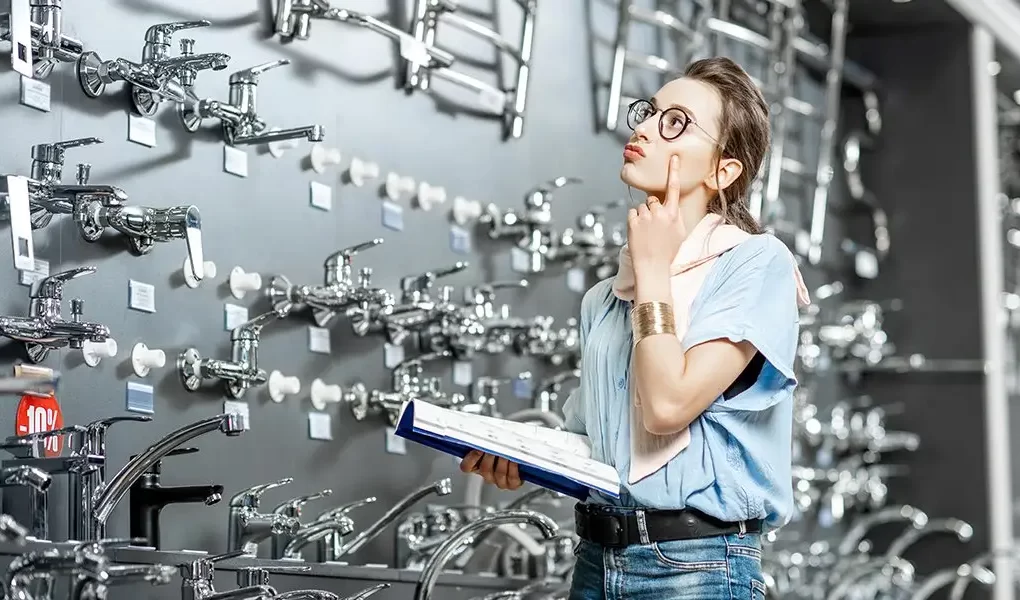Plumbing fixtures are essential components of any residential or commercial plumbing system. They are the devices that deliver and drain water in various parts of a building, such as kitchens, bathrooms, and laundry rooms. This comprehensive guide will delve into what constitutes a plumbing fixture, the different types of fixtures, their functions, and considerations for selecting and maintaining them.
What is a Plumbing Fixture?

Definition
A plumbing fixture is a device that is connected to a plumbing system and interacts with water flow, providing or draining water for various uses. Fixtures are designed to be accessible and user-friendly, enabling occupants to utilize water efficiently for various daily activities.
Common Characteristics
Plumbing fixtures typically share the following characteristics:
- Water Inlet and Outlet: They are connected to both water supply lines and drainage systems.
- User Interaction: They often include components like faucets, handles, or levers that allow users to control water flow.
- Functionality: They are designed to serve specific functions, such as bathing, washing, or cooking.
Types of Plumbing Fixtures
Bathroom Fixtures
Toilets
Toilets are one of the most fundamental plumbing fixtures. They are designed to dispose of human waste through a flushing mechanism that sends waste to the sewage system.
- Components: Bowl, tank, seat, and flushing mechanism.
- Varieties: Standard, low-flow, dual-flush, and wall-mounted toilets.
Sinks
Bathroom sinks, also known as lavatories, are used for handwashing, face washing, and other personal hygiene activities.
- Components: Basin, faucet, drain, and sometimes a vanity.
- Varieties: Pedestal sinks, under-mount sinks, vessel sinks, and integrated sinks.
Bathtubs
Bathtubs are fixtures used for bathing. They can be stand-alone units or part of a shower-bath combination.
- Components: Tub, faucet, drain, and often a showerhead.
- Varieties: Freestanding tubs, alcove tubs, corner tubs, and whirlpool tubs.
Showers
Showers provide a means for bathing using a spray of water, usually controlled by a faucet or valve.
- Components: Showerhead, faucet/valve, and often a shower enclosure or curtain.
- Varieties: Walk-in showers, shower-bath combinations, and steam showers.
Kitchen Fixtures
Kitchen Sinks
Kitchen sinks are essential for food preparation, cleaning dishes, and various other tasks.
- Components: Basin, faucet, and drain.
- Varieties: Single-bowl, double-bowl, farmhouse, and under-mount sinks.
Faucets
Kitchen faucets are integral to sinks, providing water for cooking and cleaning.
- Components: Spout, handles or levers, and sometimes a sprayer.
- Varieties: Pull-down, pull-out, touchless, and bridge faucets.
Utility Fixtures
Laundry Sinks
Laundry sinks are used in laundry rooms for washing clothes, soaking items, and handling larger cleaning tasks.
- Components: Basin, faucet, and drain.
- Varieties: Utility sinks, washtubs, and slop sinks.
Water Heaters
Water heaters are technically considered plumbing fixtures as they are connected to the plumbing system to provide hot water.
- Components: Tank or tankless unit, heating element, and controls.
- Varieties: Electric, gas, tankless, and solar water heaters.
Outdoor Fixtures
Hose Bibbs
Hose bibbs, or outdoor faucets, provide a water source outside for gardening, car washing, and other outdoor activities.
- Components: Spout, handle, and connection for a hose.
- Varieties: Standard hose bibbs, frost-free hose bibbs.
Functions of Plumbing Fixtures
Water Delivery
Plumbing fixtures are designed to deliver water where needed, such as sinks for washing, showers for bathing, and toilets for waste disposal.
Waste Removal
Fixtures like toilets and sinks are also crucial for the removal of wastewater, ensuring hygiene and sanitation by directing waste to the sewage system.
Temperature Control
Many fixtures, particularly those used for bathing and washing, include mechanisms to control water temperature, providing both hot and cold water as needed.
Convenience and Accessibility
Modern plumbing fixtures are designed to be user-friendly and accessible, often including features like adjustable faucets, touchless operation, and ergonomic designs.
Considerations for Selecting Plumbing Fixtures
Material
The material of a plumbing fixture affects its durability, appearance, and maintenance requirements. Common materials include:
- Porcelain: Used for toilets and sinks due to its durability and ease of cleaning.
- Stainless Steel: Common in kitchen sinks for its resistance to corrosion and modern look.
- Brass: Often used in faucets for its durability and aesthetic appeal.
- Acrylic: Used in bathtubs for its lightweight and versatile design options.
Style and Design
Fixtures should match the overall aesthetic of the space. Considerations include:
- Finish: Options like chrome, brushed nickel, and oil-rubbed bronze.
- Shape and Size: Fixtures should fit the space available and complement the room’s design.
Water Efficiency
Water-efficient fixtures help conserve water and reduce utility bills. Look for fixtures with:
- Low-flow designs: Such as low-flow toilets and faucets.
- EPA WaterSense label: Indicates products that meet water efficiency and performance criteria.
Installation and Maintenance
Consider the ease of installation and the maintenance requirements of the fixtures. Some points to consider are:
- Compatibility: Ensure fixtures are compatible with existing plumbing.
- Ease of Cleaning: Fixtures should be easy to clean and maintain.
- Accessibility of Parts: Availability of replacement parts and ease of repair.
Maintaining Plumbing Fixtures
Regular Cleaning
Regular cleaning prevents buildup of grime, mold, and mineral deposits. Use appropriate cleaners for different materials to avoid damage.
Periodic Inspections
Inspect fixtures regularly for leaks, cracks, and signs of wear. Early detection of issues can prevent more significant problems and costly repairs.
Professional Maintenance
Hire professional plumbers for annual maintenance checks and any major repairs or installations to ensure fixtures are properly maintained and functioning efficiently.
Innovations in Plumbing Fixtures
Smart Fixtures
Modern plumbing fixtures are increasingly incorporating smart technology, such as:
- Touchless Faucets: Use sensors to turn water on and off, enhancing hygiene and convenience.
- Smart Toilets: Features like automatic flushing, bidet functions, and heated seats.
- Water Monitoring Systems: Track water usage and detect leaks, helping to conserve water and reduce utility costs.
Sustainable Materials
The use of sustainable and eco-friendly materials in plumbing fixtures is on the rise, contributing to environmental conservation and healthier living environments.




